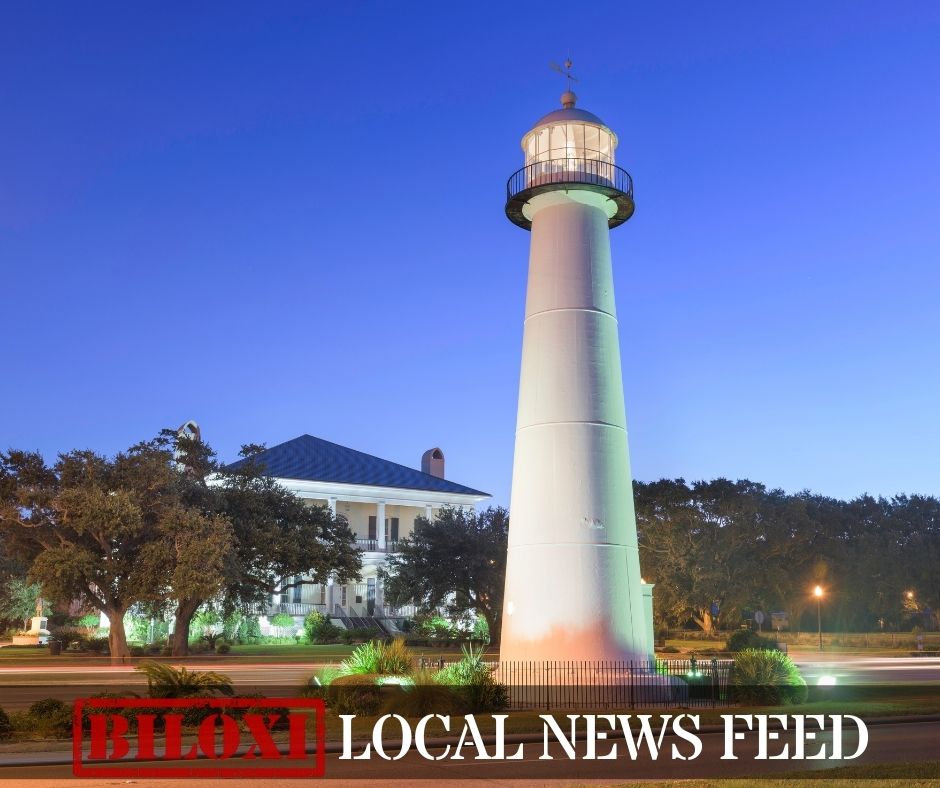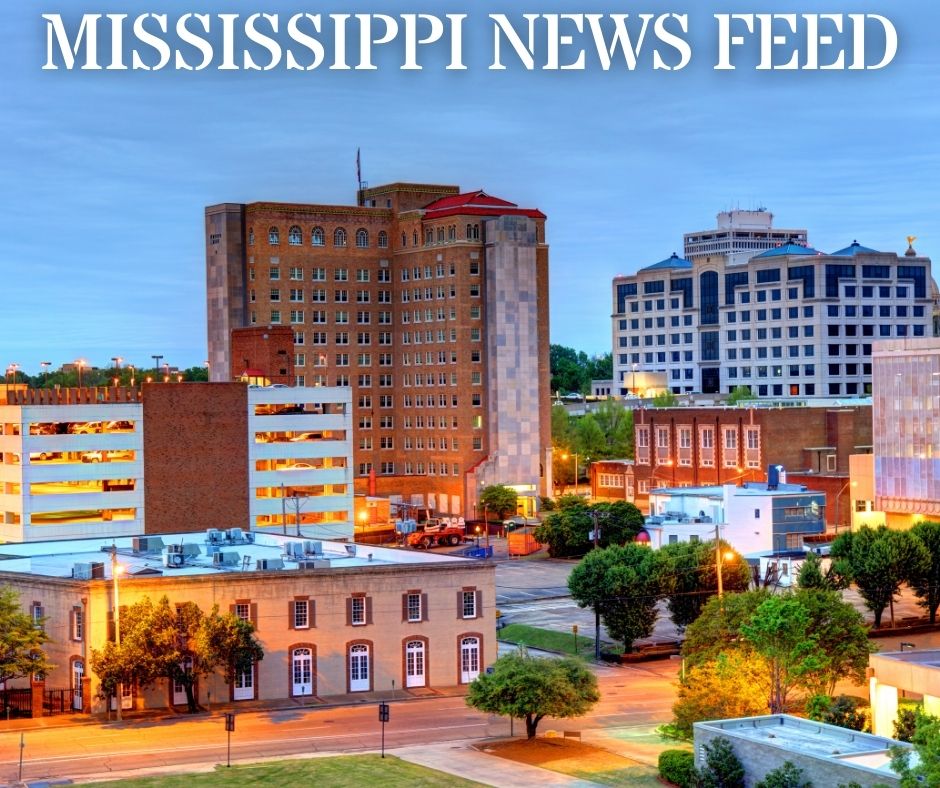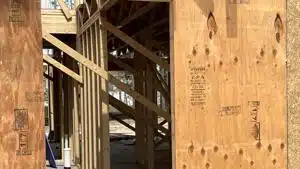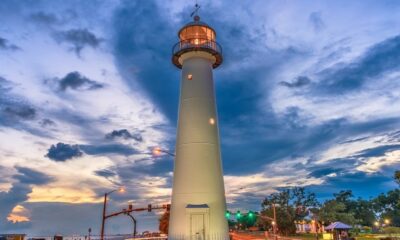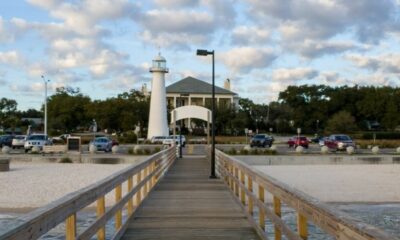Kaiser Health News
An Arm and a Leg: ‘Your Money or Your Life’: This Doctor Wrote the Book on Medical Debt
Dan Weissmann
Thu, 09 Nov 2023 10:00:00 +0000
In 2019, emergency medicine physician and historian Luke Messac was working as a medical resident. He had heard about hospitals suing their own patients over unpaid medical bills, so he decided to investigate whether the hospitals where he worked were doing the same.
It turns out they were.
“The care I was delivering to patients was resulting in them showing up in court, or having their wages garnished, or signing up for a payment plan that they would be paying for the better part of a decade,” said Messac.
In this episode of “An Arm and a Leg,” host Dan Weissmann speaks with Messac about his book, “Your Money or Your Life: Debt Collection in American Medicine,” and how people working in health care can try to reform these practices.
Dan Weissmann
Host and producer of “An Arm and a Leg.” Previously, Dan was a staff reporter for Marketplace and Chicago’s WBEZ. His work also appears on All Things Considered, Marketplace, the BBC, 99 Percent Invisible, and Reveal, from the Center for Investigative Reporting.
Credits
Emily Pisacreta
Producer
Adam Raymonda
Audio Wizard
Ellen Weiss
Editor
Click to open the Transcript
Transcript: ‘Your Money or Your Life’: This Doctor Wrote the Book on Medical Debt
Note: “An Arm and a Leg” uses speech-recognition software to generate transcripts, which may contain errors. Please use the transcript as a tool but check the corresponding audio before quoting the podcast.
Dan: Hey there. A couple years ago, I got in touch with a guy who’d been posting about this show on Twitter.
Luke Messac: Hi, yeah, my name is Luke Messac.
Dan: Luke is a doctor. He’s an instructor of emergency medicine at Harvard. And he’s a Ph.D. historian.
He told me he was writing a history of something we cover a lot on this show. Medical debt.
Luke Messac: It’s a problem I couldn’t avoid and therefore couldn’t avoid writing about.
Dan: And now that book is out. It’s called Your Money or Your Life. It tells the story of how the collection of medical debt in the US became so aggressive, the real impact it has on patients and – especially important for us – a different way to do things.
This is An Arm and a Leg, a show about why healthcare costs so freaking much and what we can maybe do about it. I’m Dan Weissmann. I’m a reporter, and I like a challenge. So, our job on this show, it’s to take one of the most enraging, terrifying, depressing parts of American life and bring you something entertaining, empowering, and useful.
Dan: Luke Messac says his journey begins with this guy.
Paul Farmer: It’s not intellectually shallow to have hope. That’s a profound thing, you know…
Dan: That’s Paul Farmer – and YES, you may have heard me mention him recently, like when we talked about the writer John Green. Paul Farmer was a doctor who founded an amazing global health organization called Partners in Health.
He’s the subject of a book called Mountains Beyond Mountains, which focuses a lot on his work in Haiti, and which, I’m gonna say again here: When we start a book club on this show, that’s my vote for our first read.
Anyway, Luke started watching Paul Farmer’s videos as a kid. And ended up as
his student.
Luke Messac: I knew I wanted to be in medicine. I knew I wanted to be a doctor. When I first got into Harvard as a 17 year old kid, I, I think YouTube was just starting at that point. I’m going to date myself. And I saw some of his lectures and this was right around the time when Mountains Beyond Mountains came out. And I started to learn more about his work. My father was born in Haiti and I’ve always had a special affinity for the country. And, and so I, I heard about him. I really lucked out. In that one year, he was teaching a freshman seminar, uh, for 12 kids and I, ended up taking this class with him as freshmen and then kind of clung for dear life to, to work with the organization, uh, after that, because we were hooked.
Dan: Yeah, I mean, what an incredible opportunity. And, you know, I’ve only, I only know him right through his kind of public persona and mostly through reading that book, which is now like 20 years old, I think, um but you know, he seems like such an incredibly inspiring person who doesn’t accept half measures.
Luke Messac: Yeah, he, he insisted on a few things, and one of them was that the poor patient shouldn’t get care any less, uh, decent than the care that anyone else would expect, that the care that we deliver at Brigham and Women’s Hospital, where he also worked, should be the standard of care that should be delivered everywhere, including rural Haiti, including rural Rwanda. And he would call that an aspirational goal sometimes, but it’s one that he was extremely serious about and devoted. This guy did not stop working. Uh, you couldn’t keep up with him, but he also made space for students, especially younger students, people who weren’t even in their medical training yet. He made so much time for me. So much time for us. He’d always respond to our emails and text messages.
Dan: So did you, like, apply to MD PhD programs, like, at the same time, like you’re, like, finishing undergrad and you’re like, okay, uh, all right, here’s the, here’s the plan for the next 15 years. Or did, things evolve? Like, how did that work?
Luke Messac: Yeah, essentially. I mean, I’m somewhat loathe to give up a little secret, which is that the MD PhD programs in the United States are paid for by the federal government. At least that still remains the case. And so if you want to get a medical degree in the United States, most of the time you’re going to come out unless you’re independently wealthy with six figures in debt. And I’m not talking low six figures. If you want to get an MD-PhD in the United States, that is still funded by the federal government. So you’re going to graduate with 0 in debt from medical school or graduate school, and you’ll get a stipend on top of that. So it is a long road, but it is one that comes with some benefits and doesn’t leave you tremendously in the hole when you come out feeling like you can’t do anything but try to pay back that debt.
Dan: That is really, really wild. It’s really interesting that it’s, I mean, There’s something very poetic about you entering this program that allows you to, uh, emerge from it without debt, and then using that resource to build an understanding of and campaign against debt.
So, it’s fall 2019 and this is your story. This is how you arrived here. You are yourself basically debt free, and you’ve been following a path. And you note that you had been reading about, medical debt lawsuits.
Luke Messac: Yeah, I’d seen it in ProPublica, Kaiser Family Foundation, um, and in various newspapers across the country. And I had friends in training at Johns Hopkins hospitals, in Baltimore, and I saw them post pictures of their protests against their own hospitals, practice of suing patients, oftentimes their own low paid employees for medical debts they couldn’t afford to pay. Their work was really an inspiration to me to find out if this kind of thing was going on elsewhere. I thought it didn’t. I thought it was very anomalous practice. I didn’t think I’d find too much, uh, in the way of it happening in my neck of the woods, but I was, I was wrong about that.
Dan: So in the book, you tell the story that you went to the courthouse in Providence, Rhode Island, where you were working as a medical resident to look up medical debt lawsuits, And you’re still imagining this as like, well, this is some kind of outlier thing. I’m not going to find it. But you’re like, you’re just a little curious?
Luke Messac: Being a historian is a very solitary and quiet existence. And that is something that you cannot say of the emergency department, neither solitary nor quiet ever. And so I was I had a day off. I wanted to relive my days in the archive. And I wanted to answer this question, and I went to the courthouse. And I asked to be led into the court records. And so basically they let you into this back room, uh, looks like, uh, an office from office space, like the movie, uh, a lot of UV light and white walls. And a very old computer that looks like it came out of the late 1990s, early 2000s, and you pull up the database, also a very clunky looking old database, and you can type in your hospital or type in your business or type in an individual and see if they’ve ever been involved in the court system. And so I did that, I looked up, uh, my hospital system, other hospital systems in the state, and some of the lawsuits were what you’d expect.
Dan: Like medical malpractice suits. And run of the mill employment disputes. But he also saw lawsuits against the hospital’s patients. A lot of lawsuits.
Luke: And when they were filed, oftentimes they would get a response from the defendant, and these responses would show me that some of the defendants were single mothers. Some of the defendants were living on social security disability. Some of the defendants were recent immigrants who had trouble responding in English and so wrote back in their native languages, pleading for leniency. And when they asked for such, they would get some in the form of usually a payment plan. Maybe they would be asked to pay some amount every month for the next five years, six years, seven years to cover the cost of a single visit. And if they signed up for those payment plans, then they would be told that if they missed any payments, that they would be charged double digit interest rates. And if they didn’t respond, as many didn’t, then they would lose the case by default. And oftentimes have their wages garnished, have 25% of their wages taken from them every month. And so these were really punitive measures being taken against really vulnerable patients. The vast majority of lawsuits in the state were filed by the hospitals in which I worked,. And this was really disturbing to me. I always comforted my patients who worried about the cost of their care when they came in and said, oh boy, am I going to be able to afford this? Um, you know, should I have come in at all? And I always tried to comfort them and say, oh, don’t worry about it. Even if you’re uninsured, we have financial assistance. You’ll, you know, we don’t, we don’t go after people. And I was wrong. I was dead wrong about that. And that made me feel, uh, pretty awful.
Dan: In the book, you say you felt shame.
Luke Messac: Yeah, it was a mixture of anger and surprise and shame, because I always knew that our healthcare system was full of injustice, that so many people can’t afford insurance, even those who do, aren’t always able to afford their care, that the distribution of resources runs along steep gradients of inequality. But I didn’t realize that I was such a direct participant in that injustice, that the care I was delivering to patients was resulting in them showing up in court or having their wages garnished or signing up for a payment plan that they would be paying for the better part of a decade. So that was really the source of my shame.
Dan: And what did you do? Like, I know eventually you took lots of actions, but like, what did you do immediately?
Luke Messac: Yeah, I talked to my friends. I talked to some mentors. I talked to my wife, who is also in medicine, but was working elsewhere. And all of us shared the same sense of shock and anger and shame, because none of us wanted to be doing that to our patients. We all kind of shared the same sense of shock but. I didn’t know what to do at first. I didn’t know where to turn.
Dan: At first you tried Twitter, right? Or Facebook or…
Luke Messac: uh, yeah, I did. I just started using Twitter the year before I put out a couple of, you know, impotently angry tweets about it and said, someone’s got to do something about this. This shouldn’t exist. And, uh, didn’t get much of a response. You know, a few friends of mine said, right on. But, you know, it, it wasn’t, it wasn’t making much of a dent.
Dan: So he wrote an op ed. Submitted everywhere he could think of – New York Times, Wall Street Journal, Washington Post, even his hometown paper, the Providence Journal.
Luke Messac: No one was interested. No bites. And then there was a small, uh, lefty blog run by this guy, Steve Alquist, a real muckraking crusader here in Providence. And I sent it to him and he said, this is really interesting. Absolutely., I’ll run it. I didn’t know if it would make any difference whether this blog post on Uprise Rhode Island, uh, uh, you know, would, would cause any waves, but sure enough, the morning it went up, I got a call from my superiors of the hospital saying they definitely wanted to meet. So it had, it had something of its desired effect. Although, uh, I won’t recommend the approach to everybody because it, it, it did imperil my job.
Dan: Because that first meeting was not set up as a friendly chat. The message also said he could face public correction or worse, dot dot dot.
Luke Messac: So I wondered what that or worse could be.
Dan: You met with a top administrator who was like, you’re just wrong buddy, we don’t do that, that never happens, I would know.
Luke Messac: Yeah, they did tell me that they didn’t sue patients, that I was wrong. And to be honest, it raised a couple other questions in my mind, saying… Is this guy just lying to me or does he literally not know? And so when I was able to prove to the folks who I was meeting with that were indeed suing patients, in fact, some of these lawsuits were filed in the last few weeks, they quickly changed course, they severed their relationship with the debt collector who was filing the lawsuits on their behalf and dismissed the remainder of the cases. So that was a, that was a sanguine outcome from that one thing, but it did make me realize a few things. One was that, you know, I’d really only started to understand what on earth was going on and how so many patients were being sued and how it was being done in a way that, uh, most of us who were involved in delivering care and even a lot of the people who were involved in running the hospital didn’t seem to know that this was happening.
Dan: So Luke Messac, the doctor, now knew that hospitals, including his, were suing patients to collect debt. Luke Messac, the historian, wanted to figure out when this practice started and why. That’s after this…
This episode of An Arm and a Leg is produced in partnership with KFF Health News. That’s a nonprofit newsroom covering health care in America. Their work is terrific. Wins all kinds of awards every year. So proud to work with them.
Luke writes: “Medical debts have long spurred people to desperate acts: theft, suicide, plane hijacking,” And yes, the story of the hijacking is in the book. But, he also writes quote: “the modern era of pay-up-or-else health financing and aggressive debt collection began in earnest during the last two decades of the twentieth century, as threats to their own survival made hospitals less financially forgiving toward their patients.” Unquote. He writes about the eighties, how changes to Medicare and Medicaid left hospitals strapped for cash. And how they tried to make up the difference by charging higher prices to private insurers– which meant higher prices for the
uninsured too. And how in the nineties, private insurers started pushing back hard on how much they’d pay, and what they’d pay for. And that hit hospitals in the pocketbook hard.
Luke Messac: And really the question is when those cost pressures start, who’s going to make up the difference? And for a lot of places, it was patients. It was patients paying in the form of higher deductibles, higher copays, or for the uninsured, more aggressive debt collection measures. And so a lot of hospitals would leave debts on the books for years, even decades, until this time when they started saying, we’re done waiting for our money. Literally, we’re done waiting for our money was the line. And so they turned to third party debt collectors to whom they would either assign debts or sell debts, and those debt collectors really introduced a whole new series of tactics that involved the court system that involved, uh, wage garnishment and reporting debt to credit bureaus and placing liens on property and foreclosing on homes and sometimes even seeking the arrest of patients who didn’t show up to hearings. So this was a really brave new world of medical debt collection that we continue to live with today.
Dan: So here’s what I don’t really get, um, this comes up whenever you see stories about hospitals sue patients over debts. It’s like how little money this actually generates for hospitals. And this is evident from like your very, your accounts of the very first sales of debts that hospitals are selling you know, these very large collections of debts for tiny, tiny amounts and like, so, what’s the point?
Luke Messac: That is the persisting mystery of all of this. I think I have a few reasons why this might’ve happened. One is that it is a revenue garnering tactic, even as small as it is, it puts you a little more in the black or a little less in the red. And if you are a hospital financial administrator who’s charged with making sure that you remain as much in the black as possible or less in the red, then you’re going to take every tool in your toolkit until someone tells you not to. And without doctors and nurses and healthcare professionals really being involved in the process or aware that the process is going on, there’s really nothing to stop them. And the only people who you’re hearing from are debt collectors themselves. They are selling their wares at your door. They are at all your conferences. They are promising you that they will help your situation so
why not? I mean, your billing and collections office doesn’t want to deal with these bills. Folks who work in hospital billing offices, they’re used to dealing with insurers. They don’t mind that at all, right? This trench warfare trying to get insurers to pay up and dealing with all of their rigmarole in the reimbursement process is something in which they are well trained. But very few people want to deal with what are called self pay patients. They don’t want to be on the phone with poor folks trying to get them to pay up. And so you’re taking a headache off their hands by handing it to a third party debt collector who’s telling you that they’ll bet they’re better at it anyway. So I think a lot of
that has to do with kind of just the, the headache saved and the promised resources, however small they are from turning to this tactic. It just is too easy to do at this point.
Dan: Luke’s book profiles some of the early trailblazers in this headache saving business.
A guy named Michael Barrist founded NCO Financial Systems. A company that bought so much medical debt that they became known as the Walmart of debt collection.
A salesman for the company named Charles Piola was so good at selling the company’s services to doctors offices and hospitals that Inc magazine dubbed him the king of cold calls.
Luke writes that the company’s tactics included contacting patients up to 50 times in four or five months, and finding them at their workplaces. And these were not folks whose training started with a hippocratic oath: Do no harm. That was not their context.
Luke Messac: Their reference points are really other forms of consumer debt. When people don’t pay for their cars, their cars get impounded. When people don’t pay their credit card bills, they get double digit interest rates too. When people don’t pay for their homes, those homes get foreclosed. So when people don’t pay their medical bills, then use the tools at your disposal, including the legal system.
There was also some concern that if hospitals were too lenient on patients, that they might be running afoul of some Medicare rules about kickbacks. Um, and this is an interesting concern, one that I saw raised in some legal papers, but it’s one that, at least for the last 20 years, the Department of Health and Human Services has tried to allay. And some hospitals have forsworn the practice. There are hundreds of hospitals out there who just do not sue patients, will not sue patients, and will tell you straight out, we don’t do it, we won’t do it. And they’re not getting sued by the federal government for kickbacks, right? So it’s not necessary. You don’t have to do it. And yet hospitals still do.
Dan: Towards the end of the book, you talk about like, how do we reform this system and that this issue of these kind of aggressive debt collection practices kind of rouse the conscience of most everyone. When individual institutions get the spotlight shown on, they generally stop doing it. But it’s not enough. Like it still leaves people with so, so many people with so much debt, with so many bills they can’t pay.
Luke Messac: Yeah. I have a lot of sympathy for people who feel like this problem is just too big. Or that they have other things that they need to do. For patients, often the patients who face this problems, you know, they’re often dealing with their own illnesses and their own debts and their own problems and to ask them to solve the problem themselves doesn’t seem a reasonable solution. But then I also have sympathy for the people who work in hospitals, the doctors, the nurses, the respiratory technicians, the janitors, the administrators, even who feel like their work is harder than ever and that they have enough trouble trying to make sure their patients get decent care and that they’re able to keep their own heads above water while doing it and not burn out and ask them to really look upon a really ugly feature of the healthcare system. And not only imbibe it and make sense of it, but do something about it. That’s asking a lot. And I’m really cognizant of the fact that we’re already asking so much of healthcare workers around the country. But I do think it’s something we need to take on. The best efforts are really the collective ones. And so I would say any possibility of joining up with other like minded folks who are already doing this work is going to be so much more fun, so much more effective.
Dan: Find your people,
Luke Messac: Amen. And then look around and see what your own place is doing your own hospital system because I regret to inform you that some of them won’t be what you hoped, but they are susceptible to pressure. They are capable of shame. And so there is a lot you can do close to home to make sure that your own institution is doing right by patients. Find out if your institution is suing patients. Look up your own hospital’s financial assistance policy and see what sort of extraordinary collection actions they will take against patients. See how patients qualify for free and discounted care and ask yourself is that as much as the hospital system could be doing given their resources. So there’s a lot you could do. Some of it involves grand systemic change, and some of it involves just making sure that where you go to work every day, where you’re training, where you’re studying is a place that you can believe in.
Dan: Luke Messac’s book is “Your Money or Your Life: Debt Collection in American Medicine.” It is out NOW from Oxford University Press. And speaking of right now: NEWSMATCH– is in effect. This is where we raise the biggest piece of our budget for next year, with your help. And the NewsMatch program matches every dollar you give us. The place to go is arm and a leg show dot com, slash, support.
Next time on “An Arm and a Leg:” For a lot of us, November is open enrollment for next year’s health insurance.
Last year around this time, Ellen Hahn was absolutely scrambling — super creatively.
Ellen Hahn: When I was a kid, I dreamed about being an actor. I didn’t dream about having health insurance. I just kind of thought I would have it.
Dan: She decided to make a short film and cast herself in it. And she raised the money by crowdsourcing online. The title: Ellen Needs Insurance.
Now, the movie’s out, We’ll hear all about it.
And: of course this year, she needs insurance all over again. Plus her union has
been on strike since May. Whoa. We’ll find out what she’s got planned.
That’s in two weeks. Meanwhile, I am saying please do take a minute to pitch in to help us make this show. Every dollar gets matched.
The place to do that is arm and a leg show, dot com, slash support.
That’s arm and a leg show dot com, slash: support
Thank you so much. Catch you in a couple weeks, with “Ellen Needs Insurance.” Till then, take care of yourself.
This episode of “An Arm and a Leg” was produced by Emily Pisacreta and me, Dan Weissman and edited by Ellen Weiss.
Daisy Rosario is our consulting managing producer.
Adam Raymonda is our audio wizard.
Our music is by Dave Winer and Blue Dot Sessions.
Gabrielle Healy is our managing editor for audience. She edits the First Aid Kit Newsletter.
Bea Bosco is our consulting director of operations.
Sarah Ballema is our operations manager.
“An Arm and a Leg” is produced in partnership with KFF Health News — formerly known as Kaiser Health News. That’s a national newsroom producing in-depth journalism about health care in America, and a core program at KFF — an independent source of health policy research, polling, and journalism.
Zach Dyer is senior audio producer at KFF Health News. He is editorial liaison to this show.
And thanks to the Institute for Nonprofit News for serving as our fiscal sponsor, allowing us to accept tax-exempt donations. You can learn more about INN at INN.org
And, finally, thanks to everybody who supports this show financially.
If you haven’t yet, we’d love for you to join us. The place for that is armandalegshow.com/support. That’s armandalegshow.com/support.
Thanks for pitching in if you can, and thanks for listening!
“An Arm and a Leg” is a co-production of KFF Health News and Public Road Productions.
To keep in touch with “An Arm and a Leg,” subscribe to the newsletter. You can also follow the show on Facebook and Twitter. And if you’ve got stories to tell about the health care system, the producers would love to hear from you.
To hear all KFF Health News podcasts, click here.
And subscribe to “An Arm and a Leg” on Spotify, Apple Podcasts,Pocket Casts, or wherever you listen to podcasts.
——————————
By: Dan Weissmann
Title: An Arm and a Leg: ‘Your Money or Your Life’: This Doctor Wrote the Book on Medical Debt
Sourced From: kffhealthnews.org/news/podcast/your-money-or-your-life-this-doctor-wrote-the-book-on-medical-debt/
Published Date: Thu, 09 Nov 2023 10:00:00 +0000
Kaiser Health News
How To Find the Right Medical Rehab Services
Rehabilitation therapy can be a godsend after hospitalization for a stroke, a fall, an accident, a joint replacement, a severe burn, or a spinal cord injury, among other conditions. Physical, occupational, and speech therapy are offered in a variety of settings, including at hospitals, nursing homes, clinics, and at home. It’s crucial to identify a high-quality, safe option with professionals experienced in treating your condition.
What kinds of rehab therapy might I need?
Physical therapy helps patients improve their strength, stability, and movement and reduce pain, usually through targeted exercises. Some physical therapists specialize in neurological, cardiovascular, or orthopedic issues. There are also geriatric and pediatric specialists. Occupational therapy focuses on specific activities (referred to as “occupations”), often ones that require fine motor skills, like brushing teeth, cutting food with a knife, and getting dressed. Speech and language therapy help people communicate. Some patients may need respiratory therapy if they have trouble breathing or need to be weaned from a ventilator.
Will insurance cover rehab?
Medicare, health insurers, workers’ compensation, and Medicaid plans in some states cover rehab therapy, but plans may refuse to pay for certain settings and may limit the amount of therapy you receive. Some insurers may require preauthorization, and some may terminate coverage if you’re not improving. Private insurers often place annual limits on outpatient therapy. Traditional Medicare is generally the least restrictive, while private Medicare Advantage plans may monitor progress closely and limit where patients can obtain therapy.
Should I seek inpatient rehabilitation?
Patients who still need nursing or a doctor’s care but can tolerate three hours of therapy five days a week may qualify for admission to a specialized rehab hospital or to a unit within a general hospital. Patients usually need at least two of the main types of rehab therapy: physical, occupational, or speech. Stays average around 12 days.
How do I choose?
Look for a place that is skilled in treating people with your diagnosis; many inpatient hospitals list specialties on their websites. People with complex or severe medical conditions may want a rehab hospital connected to an academic medical center at the vanguard of new treatments, even if it’s a plane ride away.
“You’ll see youngish patients with these life-changing, fairly catastrophic injuries,” like spinal cord damage, travel to another state for treatment, said Cheri Blauwet, chief medical officer of Spaulding Rehabilitation in Boston, one of 15 hospitals the federal government has praised for cutting-edge work.
But there are advantages in selecting a hospital close to family and friends who can help after you are discharged. Therapists can help train at-home caregivers.
How do I find rehab hospitals?
The discharge planner or caseworker at the acute care hospital should provide options. You can search for inpatient rehabilitation facilities by location or name through Medicare’s Care Compare website. There you can see how many patients the rehab hospital has treated with your condition — the more the better. You can search by specialty through the American Medical Rehabilitation Providers Association, a trade group that lists its members.
Find out what specialized technologies a hospital has, like driving simulators — a car or truck that enable a patient to practice getting in and out of a vehicle — or a kitchen table with utensils to practice making a meal.
How can I be confident a rehab hospital is reliable?
It’s not easy: Medicare doesn’t analyze staffing levels or post on its website results of safety inspections as it does for nursing homes. You can ask your state public health agency or the hospital to provide inspection reports for the last three years. Such reports can be technical, but you should get the gist. If the report says an “immediate jeopardy” was called, that means inspectors identified safety problems that put patients in danger.
The rate of patients readmitted to a general hospital for a potentially preventable reason is a key safety measure. Overall, for-profit rehabs have higher readmission rates than nonprofits do, but there are some with lower readmission rates and some with higher ones. You may not have a nearby choice: There are fewer than 400 rehab hospitals, and most general hospitals don’t have a rehab unit.
You can find a hospital’s readmission rates under Care Compare’s quality section. Rates lower than the national average are better.
Another measure of quality is how often patients are functional enough to go home after finishing rehab rather than to a nursing home, hospital, or health care institution. That measure is called “discharge to community” and is listed under Care Compare’s quality section. Rates higher than the national average are better.
Look for reviews of the hospital on Yelp and other sites. Ask if the patient will see the same therapist most days or a rotating cast of characters. Ask if the therapists have board certifications earned after intensive training to treat a patient’s particular condition.
Visit if possible, and don’t look only at the rooms in the hospital where therapy exercises take place. Injuries often occur in the 21 hours when a patient is not in therapy, but in his or her room or another part of the building. Infections, falls, bedsores, and medication errors are risks. If possible, observe whether nurses promptly respond to call lights, seem overloaded with too many patients, or are apathetically playing on their phones. Ask current patients and their family members if they are satisfied with the care.
What if I can’t handle three hours of therapy a day?
A nursing home that provides rehab might be appropriate for patients who don’t need the supervision of a doctor but aren’t ready to go home. The facilities generally provide round-the-clock nursing care. The amount of rehab varies based on the patient. There are more than 14,500 skilled nursing facilities in the United States, 12 times as many as hospitals offering rehab, so a nursing home may be the only option near you.
You can look for them through Medicare’s Care Compare website. (Read our previous guide to finding a good, well-staffed home to know how to assess the overall staffing.)
What if patients are too frail even for a nursing home?
They might need a long-term care hospital. Those specialize in patients who are in comas, on ventilators, and have acute medical conditions that require the presence of a physician. Patients stay at least four weeks, and some are there for months. Care Compare helps you search. There are fewer than 350 such hospitals.
I’m strong enough to go home. How do I receive therapy?
Many rehab hospitals offer outpatient therapy. You also can go to a clinic, or a therapist can come to you. You can hire a home health agency or find a therapist who takes your insurance and makes house calls. Your doctor or hospital may give you referrals. On Care Compare, home health agencies list whether they offer physical, occupational, or speech therapy. You can search for board-certified therapists on the American Physical Therapy Association’s website.
While undergoing rehab, patients sometimes move from hospital to nursing facility to home, often at the insistence of their insurers. Alice Bell, a senior specialist at the APTA, said patients should try to limit the number of transitions, for their own safety.
“Every time a patient moves from one setting to another,” she said, “they’re in a higher risk zone.”
KFF Health News is a national newsroom that produces in-depth journalism about health issues and is one of the core operating programs at KFF—an independent source of health policy research, polling, and journalism. Learn more about KFF.
USE OUR CONTENT
This story can be republished for free (details).
KFF Health News is a national newsroom that produces in-depth journalism about health issues and is one of the core operating programs at KFF—an independent source of health policy research, polling, and journalism. Learn more about KFF.
Subscribe to KFF Health News’ free Morning Briefing.
This article first appeared on KFF Health News and is republished here under a Creative Commons license.
The post How To Find the Right Medical Rehab Services appeared first on kffhealthnews.org
Note: The following A.I. based commentary is not part of the original article, reproduced above, but is offered in the hopes that it will promote greater media literacy and critical thinking, by making any potential bias more visible to the reader –Staff Editor.
Political Bias Rating: Centrist
This article from KFF Health News provides a comprehensive, fact-based guide to rehabilitation therapy options and how to navigate insurance, care settings, and provider quality. It avoids ideological framing and presents information in a neutral, practical tone aimed at helping consumers make informed medical decisions. While it touches on Medicare and private insurance policies, it does so without political commentary or value judgments, and no partisan viewpoints or advocacy positions are evident. The focus remains on patient care, safety, and informed choice, supporting a nonpartisan, service-oriented approach to health reporting.
Kaiser Health News
States Brace for Reversal of Obamacare Coverage Gains Under Trump’s Budget Bill
Shorter enrollment periods. More paperwork. Higher premiums. The sweeping tax and spending bill pushed by President Donald Trump includes provisions that would not only reshape people’s experience with the Affordable Care Act but, according to some policy analysts, also sharply undermine the gains in health insurance coverage associated with it.
The moves affect consumers and have particular resonance for the 19 states (plus Washington, D.C.) that run their own ACA exchanges.
Many of those states fear that the additional red tape — especially requirements that would end automatic reenrollment — would have an outsize impact on their policyholders. That’s because a greater percentage of people in those states use those rollovers versus shopping around each year, which is more commonly done by people in states that use the federal healthcare.gov marketplace.
“The federal marketplace always had a message of, ‘Come back in and shop,’ while the state-based markets, on average, have a message of, ‘Hey, here’s what you’re going to have next year, here’s what it will cost; if you like it, you don’t have to do anything,’” said Ellen Montz, who oversaw the federal ACA marketplace under the Biden administration as deputy administrator and director at the Center for Consumer Information and Insurance Oversight. She is now a managing director with the Manatt Health consulting group.
Millions — perhaps up to half of enrollees in some states — may lose or drop coverage as a result of that and other changes in the legislation combined with a new rule from the Trump administration and the likely expiration at year’s end of enhanced premium subsidies put in place during the covid-19 pandemic. Without an extension of those subsidies, which have been an important driver of Obamacare enrollment in recent years, premiums are expected to rise 75% on average next year. That’s starting to happen already, based on some early state rate requests for next year, which are hitting double digits.
“We estimate a minimum 30% enrollment loss, and, in the worst-case scenario, a 50% loss,” said Devon Trolley, executive director of Pennie, the ACA marketplace in Pennsylvania, which had 496,661 enrollees this year, a record.
Drops of that magnitude nationally, coupled with the expected loss of Medicaid coverage for millions more people under the legislation Trump calls the “One Big Beautiful Bill,” could undo inroads made in the nation’s uninsured rate, which dropped by about half from the time most of the ACA’s provisions went into effect in 2014, when it hovered around 14% to 15% of the population, to just over 8%, according to the most recent data.
Premiums would rise along with the uninsured rate, because older or sicker policyholders are more likely to try to jump enrollment hurdles, while those who rarely use coverage — and are thus less expensive — would not.
After a dramatic all-night session, House Republicans passed the bill, meeting the president’s July 4 deadline. Trump is expected to sign the measure on Independence Day. It would increase the federal deficit by trillions of dollars and cut spending on a variety of programs, including Medicaid and nutrition assistance, to partly offset the cost of extending tax cuts put in place during the first Trump administration.
The administration and its supporters say the GOP-backed changes to the ACA are needed to combat fraud. Democrats and ACA supporters see this effort as the latest in a long history of Republican efforts to weaken or repeal Obamacare. Among other things, the legislation would end several changes put in place by the Biden administration that were credited with making it easier to sign up, such as lengthening the annual open enrollment period and launching a special program for very low-income people that essentially allows them to sign up year-round.
In addition, automatic reenrollment, used by more than 10 million people for 2025 ACA coverage, would end in the 2028 sign-up season. Instead, consumers would have to update their information, starting in August each year, before the close of open enrollment, which would end Dec. 15, a month earlier than currently.
That’s a key change to combat rising enrollment fraud, said Brian Blase, president of the conservative Paragon Health Institute, because it gets at what he calls the Biden era’s “lax verification requirements.”
He blames automatic reenrollment, coupled with the availability of zero-premium plans for people with lower incomes that qualify them for large subsidies, for a sharp uptick in complaints from insurers, consumers, and brokers about fraudulent enrollments in 2023 and 2024. Those complaints centered on consumers’ being enrolled in an ACA plan, or switched from one to another, without authorization, often by commission-seeking brokers.
In testimony to Congress on June 25, Blase wrote that “this simple step will close a massive loophole and significantly reduce improper enrollment and spending.”
States that run their own marketplaces, however, saw few, if any, such problems, which were confined mainly to the 31 states using the federal healthcare.gov.
The state-run marketplaces credit their additional security measures and tighter control over broker access than healthcare.gov for the relative lack of problems.
“If you look at California and the other states that have expanded their Medicaid programs, you don’t see that kind of fraud problem,” said Jessica Altman, executive director of Covered California, the state’s Obamacare marketplace. “I don’t have a single case of a consumer calling Covered California saying, ‘I was enrolled without consent.’”
Such rollovers are common with other forms of health insurance, such as job-based coverage.
“By requiring everyone to come back in and provide additional information, and the fact that they can’t get a tax credit until they take this step, it is essentially making marketplace coverage the most difficult coverage to enroll in,” said Trolley at Pennie, 65% of whose policyholders were automatically reenrolled this year, according to KFF data. KFF is a health information nonprofit that includes KFF Health News.
Federal data shows about 22% of federal sign-ups in 2024 were automatic-reenrollments, versus 58% in state-based plans. Besides Pennsylvania, the states that saw such sign-ups for more than 60% of enrollees include California, New York, Georgia, New Jersey, and Virginia, according to KFF.
States do check income and other eligibility information for all enrollees — including those being automatically renewed, those signing up for the first time, and those enrolling outside the normal open enrollment period because they’ve experienced a loss of coverage or other life event or meet the rules for the low-income enrollment period.
“We have access to many data sources on the back end that we ping, to make sure nothing has changed. Most people sail through and are able to stay covered without taking any proactive step,” Altman said.
If flagged for mismatched data, applicants are asked for additional information. Under current law, “we have 90 days for them to have a tax credit while they submit paperwork,” Altman said.
That would change under the tax and spending plan before Congress, ending presumptive eligibility while a person submits the information.
A white paper written for Capital Policy Analytics, a Washington-based consultancy that specializes in economic analysis, concluded there appears to be little upside to the changes.
While “tighter verification can curb improper enrollments,” the additional paperwork, along with the expiration of higher premiums from the enhanced tax subsidies, “would push four to six million eligible people out of Marketplace plans, trading limited fraud savings for a surge in uninsurance,” wrote free market economists Ike Brannon and Anthony LoSasso.
“Insurers would be left with a smaller, sicker risk pool and heightened pricing uncertainty, making further premium increases and selective market exits [by insurers] likely,” they wrote.
KFF Health News is a national newsroom that produces in-depth journalism about health issues and is one of the core operating programs at KFF—an independent source of health policy research, polling, and journalism. Learn more about KFF.
USE OUR CONTENT
This story can be republished for free (details).
KFF Health News is a national newsroom that produces in-depth journalism about health issues and is one of the core operating programs at KFF—an independent source of health policy research, polling, and journalism. Learn more about KFF.
Subscribe to KFF Health News’ free Morning Briefing.
This article first appeared on KFF Health News and is republished here under a Creative Commons license.
The post States Brace for Reversal of Obamacare Coverage Gains Under Trump’s Budget Bill appeared first on kffhealthnews.org
Note: The following A.I. based commentary is not part of the original article, reproduced above, but is offered in the hopes that it will promote greater media literacy and critical thinking, by making any potential bias more visible to the reader –Staff Editor.
Political Bias Rating: Center-Left
This content presents a critique of Republican-led changes to the Affordable Care Act, emphasizing potential negative impacts such as increased premiums, reduced enrollment, and the erosion of coverage gains made under the ACA. It highlights the perspective of policy analysts and state officials who express concern over these measures, while also presenting conservative viewpoints, particularly those focusing on fraud reduction. Overall, the tone and framing lean toward protecting the ACA and its expansions, which traditionally aligns with Center-Left media analysis.
Kaiser Health News
Dual Threats From Trump and GOP Imperil Nursing Homes and Their Foreign-Born Workers
In a top-rated nursing home in Alexandria, Virginia, the Rev. Donald Goodness is cared for by nurses and aides from various parts of Africa. One of them, Jackline Conteh, a naturalized citizen and nurse assistant from Sierra Leone, bathes and helps dress him most days and vigilantly intercepts any meal headed his way that contains gluten, as Goodness has celiac disease.
“We are full of people who come from other countries,” Goodness, 92, said about Goodwin House Alexandria’s staff. Without them, the retired Episcopal priest said, “I would be, and my building would be, desolate.”
The long-term health care industry is facing a double whammy from President Donald Trump’s crackdown on immigrants and the GOP’s proposals to reduce Medicaid spending. The industry is highly dependent on foreign workers: More than 800,000 immigrants and naturalized citizens comprise 28% of direct care employees at home care agencies, nursing homes, assisted living facilities, and other long-term care companies.
But in January, the Trump administration rescinded former President Joe Biden’s 2021 policy that protected health care facilities from Immigration and Customs Enforcement raids. The administration’s broad immigration crackdown threatens to drastically reduce the number of current and future workers for the industry. “People may be here on a green card, and they are afraid ICE is going to show up,” said Katie Smith Sloan, president of LeadingAge, an association of nonprofits that care for older adults.
Existing staffing shortages and quality-of-care problems would be compounded by other policies pushed by Trump and the Republican-led Congress, according to nursing home officials, resident advocates, and academic experts. Federal spending cuts under negotiation may strip nursing homes of some of their largest revenue sources by limiting ways states leverage Medicaid money and making it harder for new nursing home residents to retroactively qualify for Medicaid. Care for 6 in 10 residents is paid for by Medicaid, the state-federal health program for poor or disabled Americans.
“We are facing the collision of two policies here that could further erode staffing in nursing homes and present health outcome challenges,” said Eric Roberts, an associate professor of internal medicine at the University of Pennsylvania.
The industry hasn’t recovered from covid-19, which killed more than 200,000 long-term care facility residents and workers and led to massive staff attrition and turnover. Nursing homes have struggled to replace licensed nurses, who can find better-paying jobs at hospitals and doctors’ offices, as well as nursing assistants, who can earn more working at big-box stores or fast-food joints. Quality issues that preceded the pandemic have expanded: The percentage of nursing homes that federal health inspectors cited for putting residents in jeopardy of immediate harm or death has risen alarmingly from 17% in 2015 to 28% in 2024.
In addition to seeking to reduce Medicaid spending, congressional Republicans have proposed shelving the biggest nursing home reform in decades: a Biden-era rule mandating minimum staffing levels that would require most of the nation’s nearly 15,000 nursing homes to hire more workers.
The long-term care industry expects demand for direct care workers to burgeon with an influx of aging baby boomers needing professional care. The Census Bureau has projected the number of people 65 and older would grow from 63 million this year to 82 million in 2050.
In an email, Vianca Rodriguez Feliciano, a spokesperson for the Department of Health and Human Services, said the agency “is committed to supporting a strong, stable long-term care workforce” and “continues to work with states and providers to ensure quality care for older adults and individuals with disabilities.” In a separate email, Tricia McLaughlin, a Department of Homeland Security spokesperson, said foreigners wanting to work as caregivers “need to do that by coming here the legal way” but did not address the effect on the long-term care workforce of deportations of classes of authorized immigrants.
Goodwin Living, a faith-based nonprofit, runs three retirement communities in northern Virginia for people who live independently, need a little assistance each day, have memory issues, or require the availability of around-the-clock nurses. It also operates a retirement community in Washington, D.C. Medicare rates Goodwin House Alexandria as one of the best-staffed nursing homes in the country. Forty percent of the organization’s 1,450 employees are foreign-born and are either seeking citizenship or are already naturalized, according to Lindsay Hutter, a Goodwin spokesperson.
“As an employer, we see they stay on with us, they have longer tenure, they are more committed to the organization,” said Rob Liebreich, Goodwin’s president and CEO.
Jackline Conteh spent much of her youth shuttling between Sierra Leone, Liberia, and Ghana to avoid wars and tribal conflicts. Her mother was killed by a stray bullet in her home country of Liberia, Conteh said. “She was sitting outside,” Conteh, 56, recalled in an interview.
Conteh was working as a nurse in a hospital in Sierra Leone in 2009 when she learned of a lottery for visas to come to the United States. She won, though she couldn’t afford to bring her husband and two children along at the time. After she got a nursing assistant certification, Goodwin hired her in 2012.
Conteh said taking care of elders is embedded in the culture of African families. When she was 9, she helped feed and dress her grandmother, a job that rotated among her and her sisters. She washed her father when he was dying of prostate cancer. Her husband joined her in the United States in 2017; she cares for him because he has heart failure.
“Nearly every one of us from Africa, we know how to care for older adults,” she said.
Her daughter is now in the United States, while her son is still in Africa. Conteh said she sends money to him, her mother-in-law, and one of her sisters.
In the nursing home where Goodness and 89 other residents live, Conteh helps with daily tasks like dressing and eating, checks residents’ skin for signs of swelling or sores, and tries to help them avoid falling or getting disoriented. Of 102 employees in the building, broken up into eight residential wings called “small houses” and a wing for memory care, at least 72 were born abroad, Hutter said.
Donald Goodness grew up in Rochester, New York, and spent 25 years as rector of The Church of the Ascension in New York City, retiring in 1997. He and his late wife moved to Alexandria to be closer to their daughter, and in 2011 they moved into independent living at the Goodwin House. In 2023 he moved into one of the skilled nursing small houses, where Conteh started caring for him.
“I have a bad leg and I can’t stand on it very much, or I’d fall over,” he said. “She’s in there at 7:30 in the morning, and she helps me bathe.” Goodness said Conteh is exacting about cleanliness and will tell the housekeepers if his room is not kept properly.
Conteh said Goodness was withdrawn when he first arrived. “He don’t want to come out, he want to eat in his room,” she said. “He don’t want to be with the other people in the dining room, so I start making friends with him.”
She showed him a photo of Sierra Leone on her phone and told him of the weather there. He told her about his work at the church and how his wife did laundry for the choir. The breakthrough, she said, came one day when he agreed to lunch with her in the dining room. Long out of his shell, Goodness now sits on the community’s resident council and enjoys distributing the mail to other residents on his floor.
“The people that work in my building become so important to us,” Goodness said.
While Trump’s 2024 election campaign focused on foreigners here without authorization, his administration has broadened to target those legally here, including refugees who fled countries beset by wars or natural disasters. This month, the Department of Homeland Security revoked the work permits for migrants and refugees from Cuba, Haiti, Nicaragua, and Venezuela who arrived under a Biden-era program.
“I’ve just spent my morning firing good, honest people because the federal government told us that we had to,” Rachel Blumberg, president of the Toby & Leon Cooperman Sinai Residences of Boca Raton, a Florida retirement community, said in a video posted on LinkedIn. “I am so sick of people saying that we are deporting people because they are criminals. Let me tell you, they are not all criminals.”
At Goodwin House, Conteh is fearful for her fellow immigrants. Foreign workers at Goodwin rarely talk about their backgrounds. “They’re scared,” she said. “Nobody trusts anybody.” Her neighbors in her apartment complex fled the U.S. in December and returned to Sierra Leone after Trump won the election, leaving their children with relatives.
“If all these people leave the United States, they go back to Africa or to their various countries, what will become of our residents?” Conteh asked. “What will become of our old people that we’re taking care of?”
KFF Health News is a national newsroom that produces in-depth journalism about health issues and is one of the core operating programs at KFF—an independent source of health policy research, polling, and journalism. Learn more about KFF.
Subscribe to KFF Health News’ free Morning Briefing.
This article first appeared on KFF Health News and is republished here under a Creative Commons license.
The post Dual Threats From Trump and GOP Imperil Nursing Homes and Their Foreign-Born Workers appeared first on kffhealthnews.org
Note: The following A.I. based commentary is not part of the original article, reproduced above, but is offered in the hopes that it will promote greater media literacy and critical thinking, by making any potential bias more visible to the reader –Staff Editor.
Political Bias Rating: Center-Left
This content primarily highlights concerns about the impact of restrictive immigration policies and Medicaid spending cuts proposed by the Trump administration and Republican lawmakers on the long-term care industry. It emphasizes the importance of immigrant workers in healthcare, the challenges that staffing shortages pose to patient care, and the potential negative effects of GOP policy proposals. The tone is critical of these policies while sympathetic toward immigrant workers and advocates for maintaining or increasing government support for healthcare funding. The framing aligns with a center-left perspective, focusing on social welfare, immigrant rights, and concern about the consequences of conservative economic and immigration policies without descending into partisan rhetoric.
-
News from the South - North Carolina News Feed6 days ago
Reagan era credit pumps billions into North Carolina housing | North Carolina
-
News from the South - South Carolina News Feed6 days ago
South Carolina’s Tess Ferm Wins Miss America’s Teen 2026
-
News from the South - Kentucky News Feed6 days ago
3 states push to put the Ten Commandments back in school – banking on new guidance at the Supreme Court
-
News from the South - Alabama News Feed6 days ago
Amid opposition to Blount County medical waste facility, a mysterious Facebook page weighs in
-
News from the South - West Virginia News Feed7 days ago
National Grandparents Day (9-7-25) and the special bond shared with their grandchildren
-
Local News6 days ago
Duke University pilot project examining pros and cons of using artificial intelligence in college
-
News from the South - Arkansas News Feed5 days ago
‘One Pill Can Kill’ program aims to reduce opioid drug overdose
-
Local News7 days ago
Marsquakes indicate a solid core for the red planet, just like Earth




